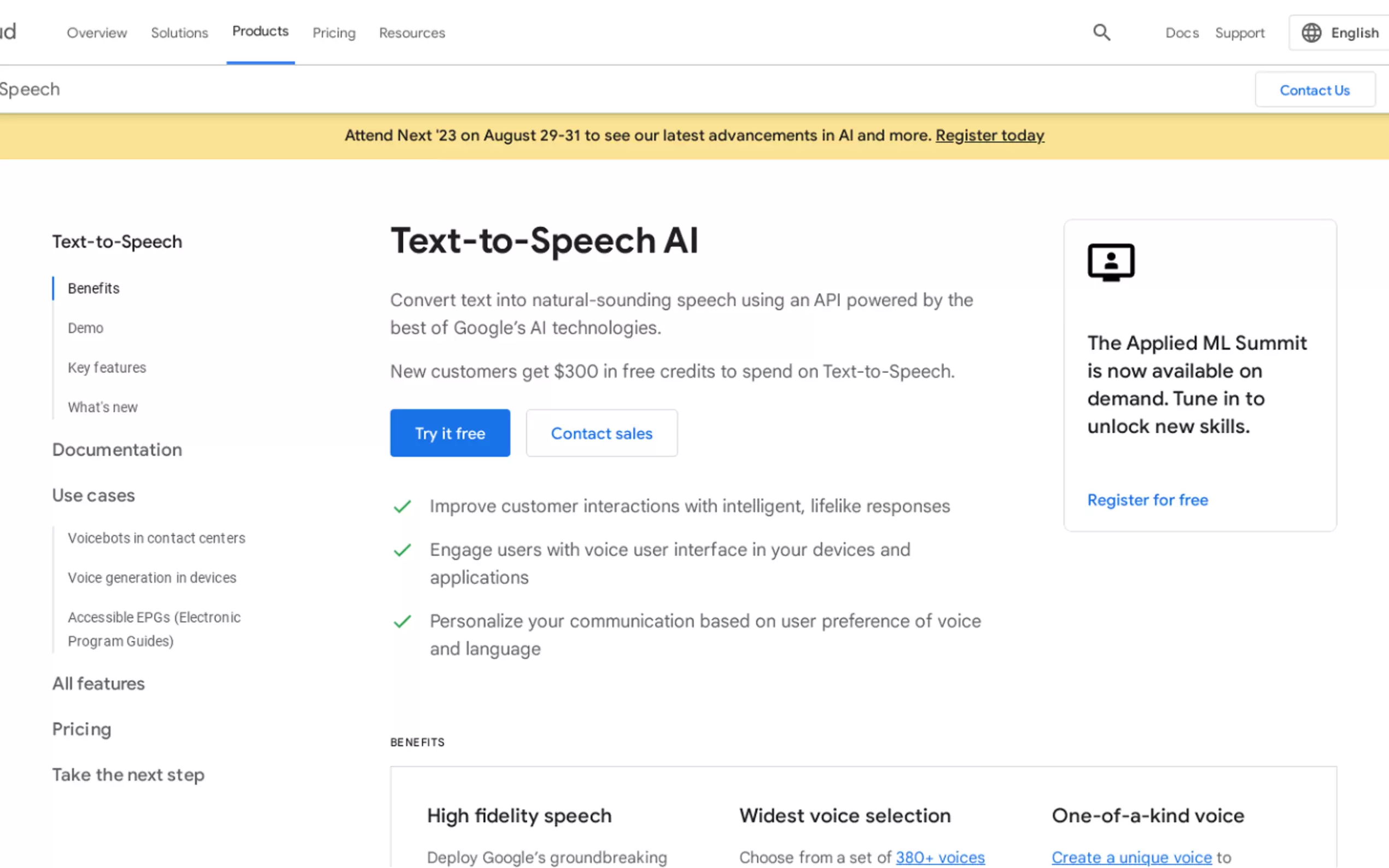
What is Google Text-to-Speech?
Google’s Text-to-Speech API transforms written text into lifelike, natural-sounding speech using cutting-edge AI technology. Powered by DeepMind’s advanced speech synthesis, it offers high-fidelity audio, a wide range of voices, and customizable options to suit diverse applications. Whether enhancing customer interactions, enabling voice interfaces, or creating accessible content, this API delivers seamless, human-like speech experiences. New users can explore its capabilities with up to $300 in free credits.
Key Features:
🎙️ High-Fidelity Voices
Leverage DeepMind’s WaveNet technology to generate speech that sounds almost indistinguishable from human voices, ensuring a natural and engaging listening experience.🌍 380+ Voices in 50+ Languages
Choose from a vast library of voices, including Mandarin, Hindi, Spanish, Arabic, and more, to match your audience’s language and cultural preferences.🎨 Custom Voice Creation
Train a unique voice model using your own recordings to represent your brand authentically across all customer touchpoints.📝 SSML & Text Customization
Use Speech Synthesis Markup Language (SSML) to fine-tune speech with pauses, pronunciation rules, and formatting for dates, numbers, and more.⚙️ Flexible Integration
Easily integrate the API into apps, devices, and IoT systems via REST or gRPC, supporting multiple audio formats like MP3 and OGG Opus.
Use Cases:
Customer Support Chatbots
Replace static, pre-recorded responses with dynamic, AI-generated speech for more personalized and natural customer interactions. For example, a telecom company can use Text-to-Speech to create a voice chatbot that handles FAQs with lifelike intonation and clarity.Voice-Enabled Devices
Enable smart devices like home assistants or car systems to read text aloud with human-like voices, improving user engagement and accessibility. Imagine a smart speaker reading recipes or news articles in a natural, conversational tone.Accessible Content Creation
Generate audio versions of electronic program guides (EPGs) or e-books for visually impaired users, ensuring inclusivity and ease of use. A streaming platform could use Text-to-Speech to narrate program descriptions, making navigation simpler for all users.
Conclusion:
Google’s Text-to-Speech API is a game-changer for businesses and developers seeking to create natural, customizable voice experiences. With its high-quality audio, extensive language support, and flexible integration options, it’s the ideal solution for enhancing customer interactions, enabling voice interfaces, and making content more accessible. Start your free trial today and discover how this powerful tool can elevate your applications.
FAQs:
What languages and voices does Text-to-Speech support?
The API offers 380+ voices across 50+ languages, including Mandarin, Hindi, Spanish, and Arabic, with more being added regularly.Can I create a custom voice for my brand?
Yes, you can train a unique voice model using your own recordings, ensuring your brand’s voice stands out and resonates with your audience.How does pricing work?
Pricing is based on the number of characters processed monthly. WaveNet voices offer 1 million free characters per month, while standard voices provide 4 million free characters.Can I adjust speech speed, pitch, and volume?
Absolutely. The API allows you to customize speech speed (up to 4x faster or slower), pitch (up to 20 semitones higher or lower), and volume (up to 16db or down to -96db).What audio formats are supported?
Text-to-Speech supports multiple formats, including MP3, Linear16, and OGG Opus, ensuring compatibility with various devices and applications.







